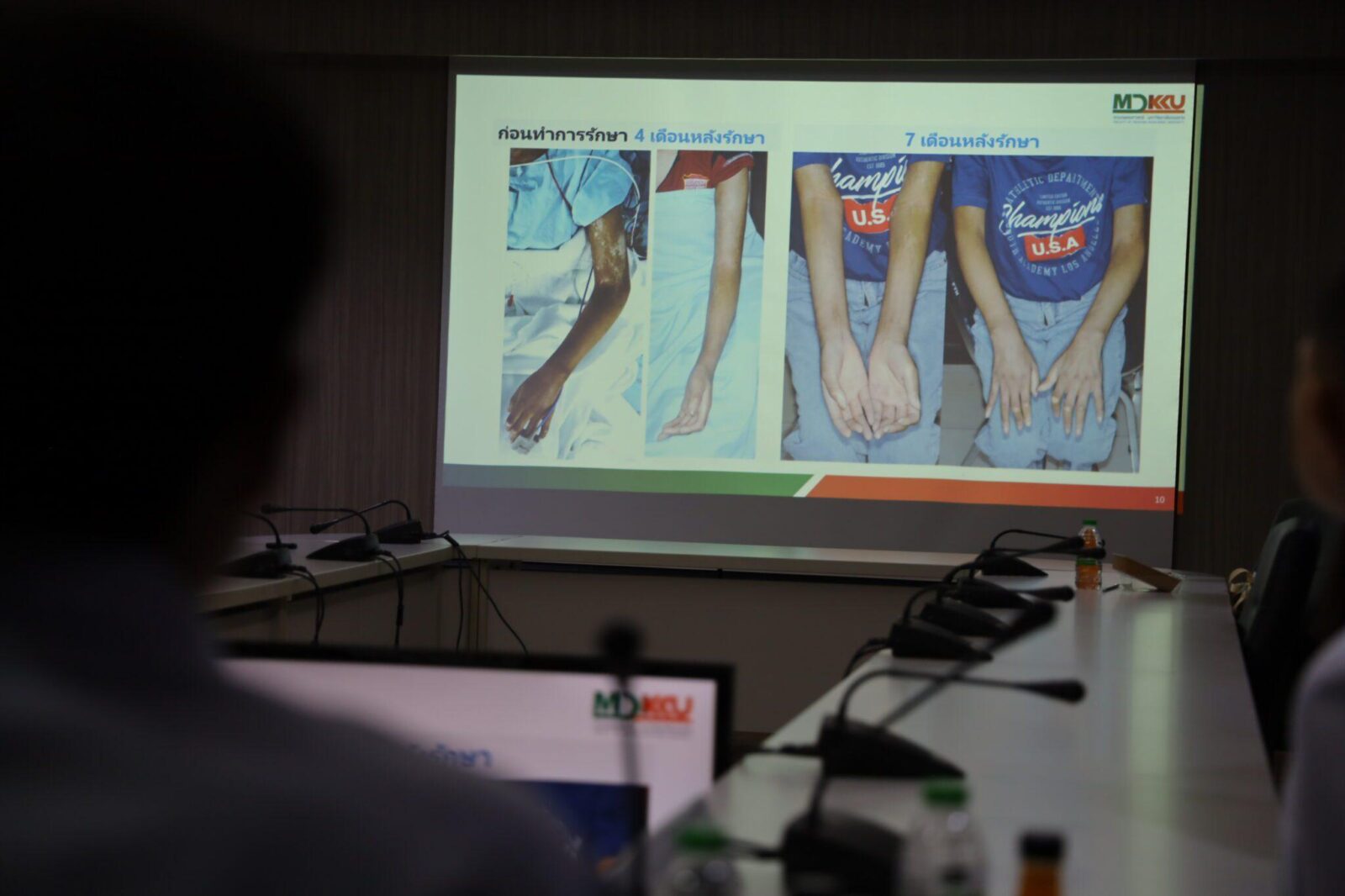Thursday February 22, 2024 – Srinagarind Hospital, Faculty of Medicine, Khon Kaen University held a press conference to release the news: “Isan First Successful Case in Scleroderma treatment by Hematopoietic Stem Cell Transplantation (HSCT)”. The press meeting was led by Assoc. Prof. Apichat Jirawutthipong, M.D., Dean of the Faculty of Medicine; Prof. Songsak Kiatchusakul, M.D., Director of Srinagarind Hospital; Prof. Chingching Fucharoen, M.D., Specialized doctor in Arthritis and Rheumatic, Department of Medicine, the patient doctor; Asst. Prof. Chinnadol Wanitpongpan, M.D., specialized doctor in Hematology, Department of Medicine; and Miss Tanawan Tophukhiaw, the patient. The press conference was held at Nongwaeng Room, Lecture Building, Faculty of Medicine.
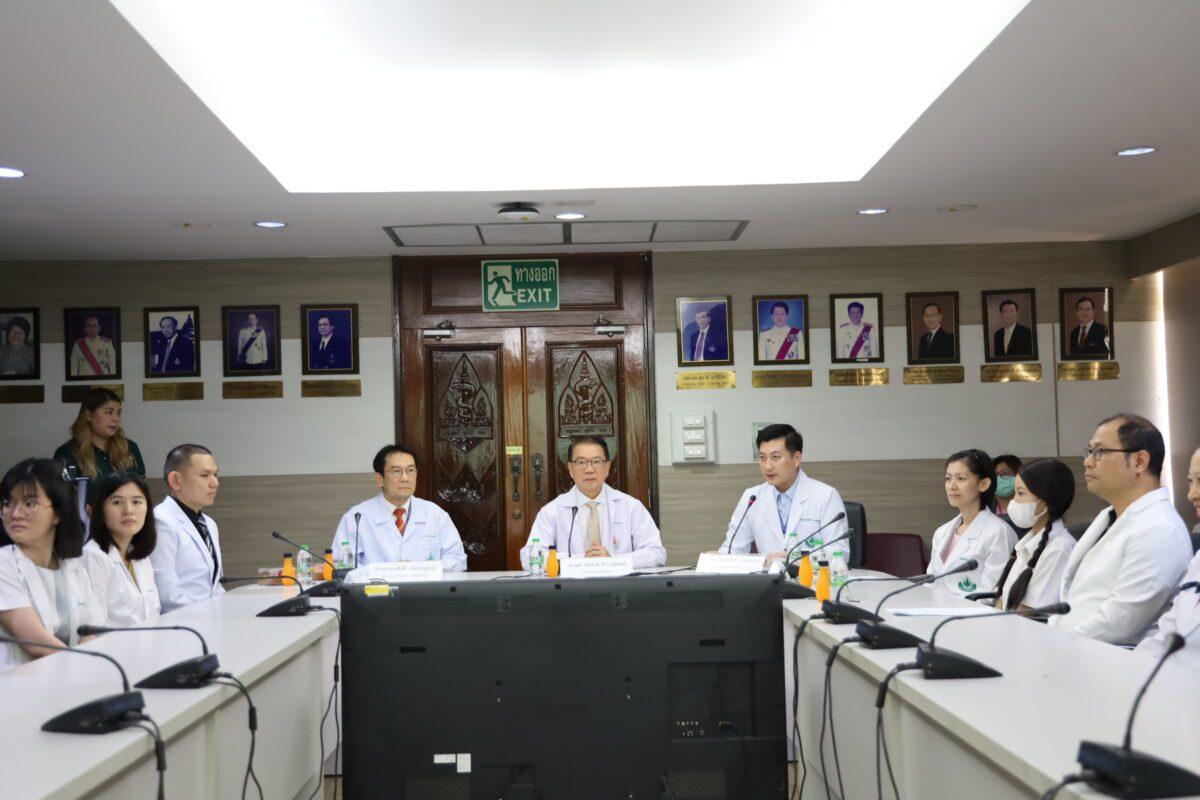
Assoc. Prof. Apichat Jirawutthipong, M.D., Dean of the Faculty of Medicine relates about the progress of Srinagarind Hospital that at present, the hospital applied the technology in the development of treatment efficiency. “In the past, Scleroderma patients cannot be treated even though they could afford it.” But now, Hematopoietic Stem Cell Transplantation has become the high-efficiency method.
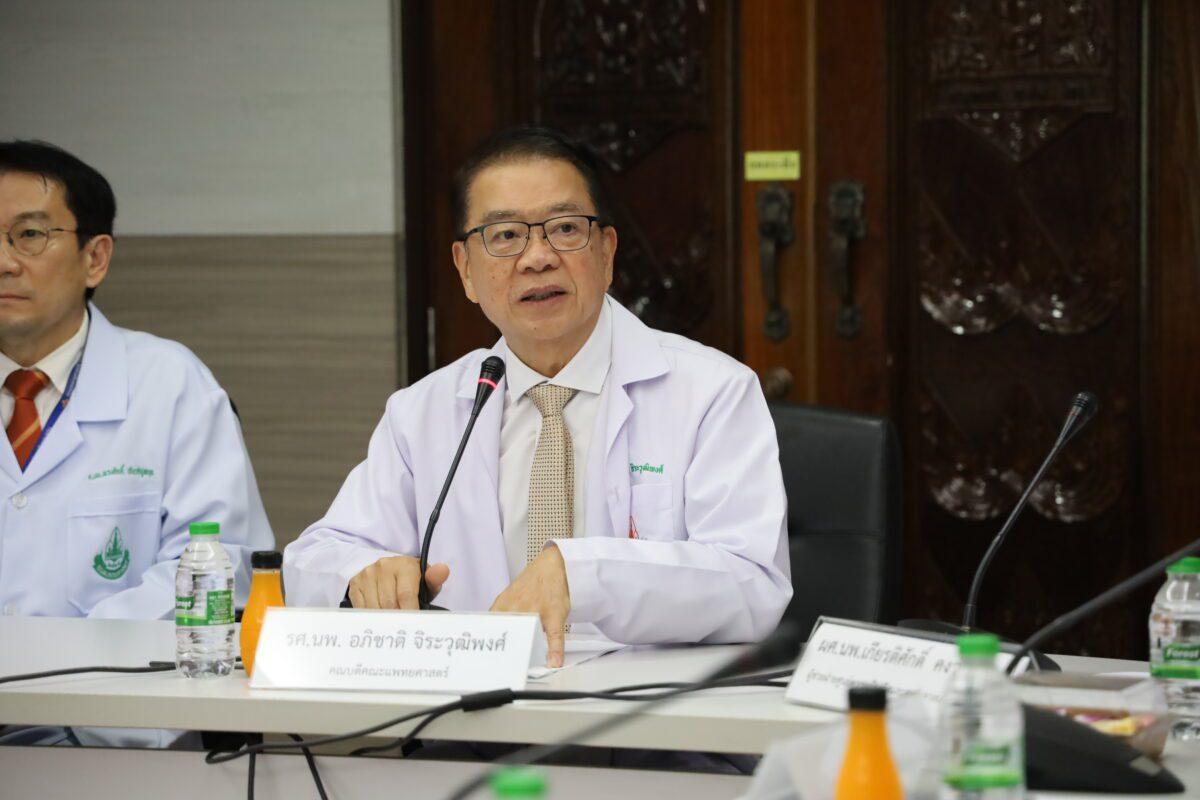
Prof. Chingching Fucharoen, M.D., Specialized doctor in Arthritis and Rheumatic, Department of Medicine, the patient doctor, revealed that Scleroderma occurs from the abnormality of the immunization system that causes body cells to produce collagen fiber continuously and stimulates fibroses building until there are fibroses on different organs in the body. This causes tension of skin on the face, fingers, toes, arms, legs, chest and belly. The tension can extend to inner organs such as on the lung or heart muscle. What happens can be severe and lead to physical disability and death. In Thailand, Scleroderma patients account for 24 per 100,000 people. In the Northeast alone, the patients account for 40 out of 100,000 people. In general, Scleroderma is found in middle-aged to old aged patients (40-50 years); it is rarely found in young people.
What is Scleroderma? How does it develop? How dangerous is it?
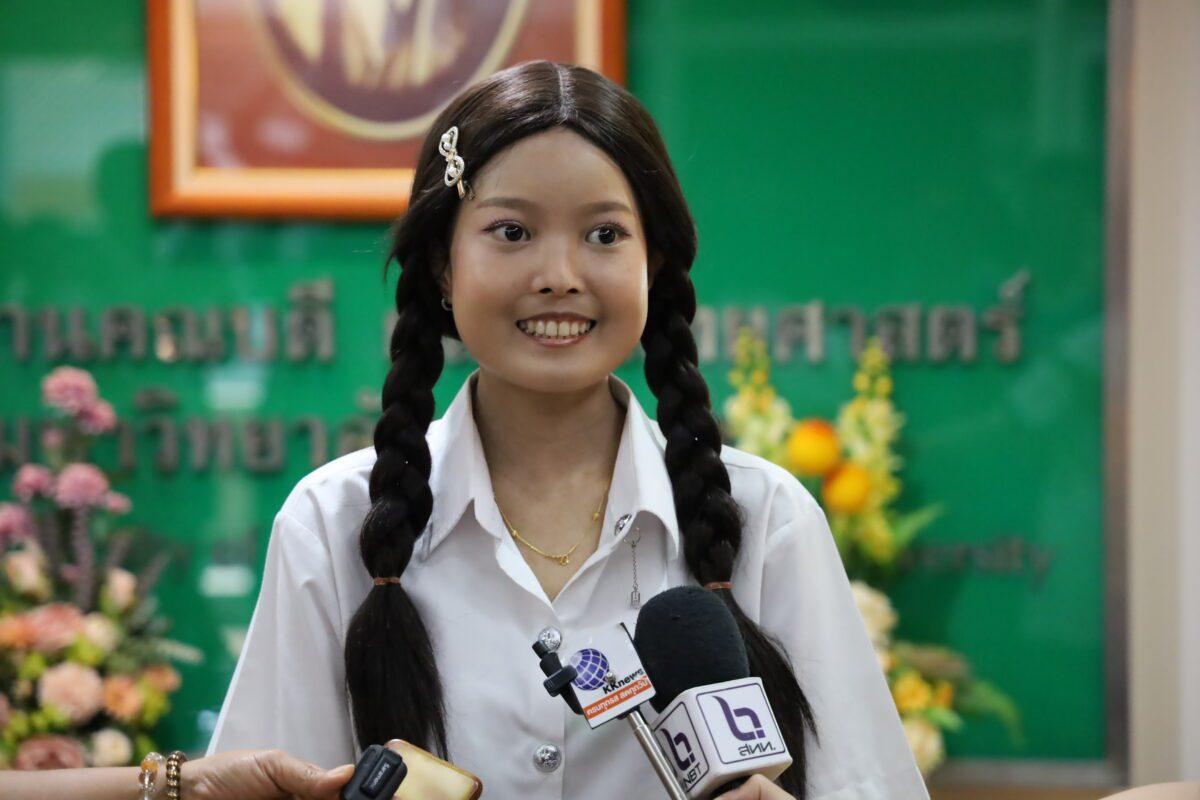
Miss Tanawan Tophukhiaw, the patient, began to develop Scleroderma when she was 14 years old. Her case has been followed up by pediatrician. Then in August, 2018, her fingers began to be pale and green when they touched something cold. The skin began to darken and the skin began to harden from the fingers to the hands and both arms. Even though she was prescribed with steroid and immune-suppressants, tension still persisted. She also began to develop speckles on her face, neck, arms and legs.
Treatment of Scleroderma by Hematopoietic Stem Cell Transplantation
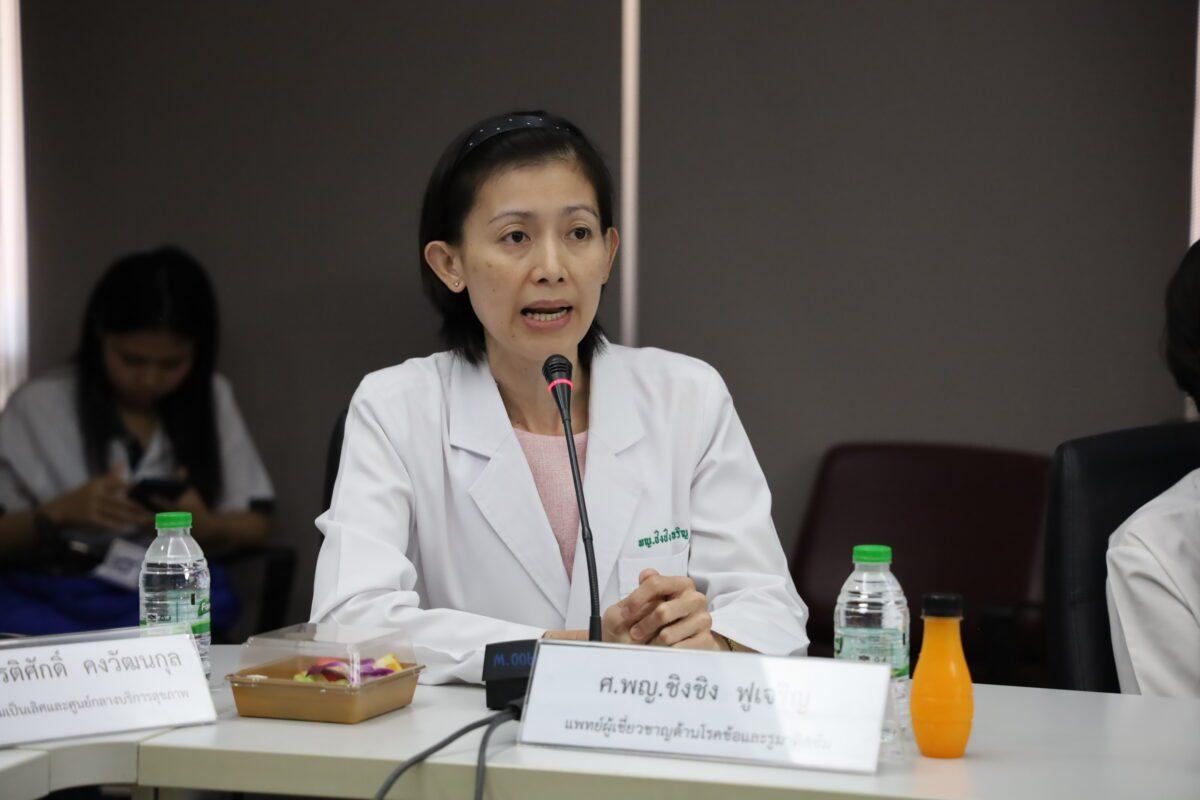
Prof. Chingching said that when the 18 year old patient was transferred to the Arthritis and Rheumatic Department in January, 2022; fibroses had already extended to the lung, but only 10% of lesions were found there. The skin was hard and tense, so the doctor planned the treatment by transplanting with the patient’s hematopoietic stem cell.
After 14 days pf the treatment, the patient’s skin was found to soften. In the third month, her joints were better until she was able to stretch the fingers, elbows and arms more comfortably. The skin color obviously returned to be normal. The function of internal organs became normal and her overall symptoms were improved step by step. She was able to help herself and resume her normal daily life.

“The patient treatment was successful for the first time and it was the first case of Isan. The patient was also the youngest of her counterparts. This was also the reason we accelerated the treatment so that she would be able to lead her future life happily. From now, we will follow-up the symptoms continuously and we hope she will fully recover from Scleroderma within 2 years.”
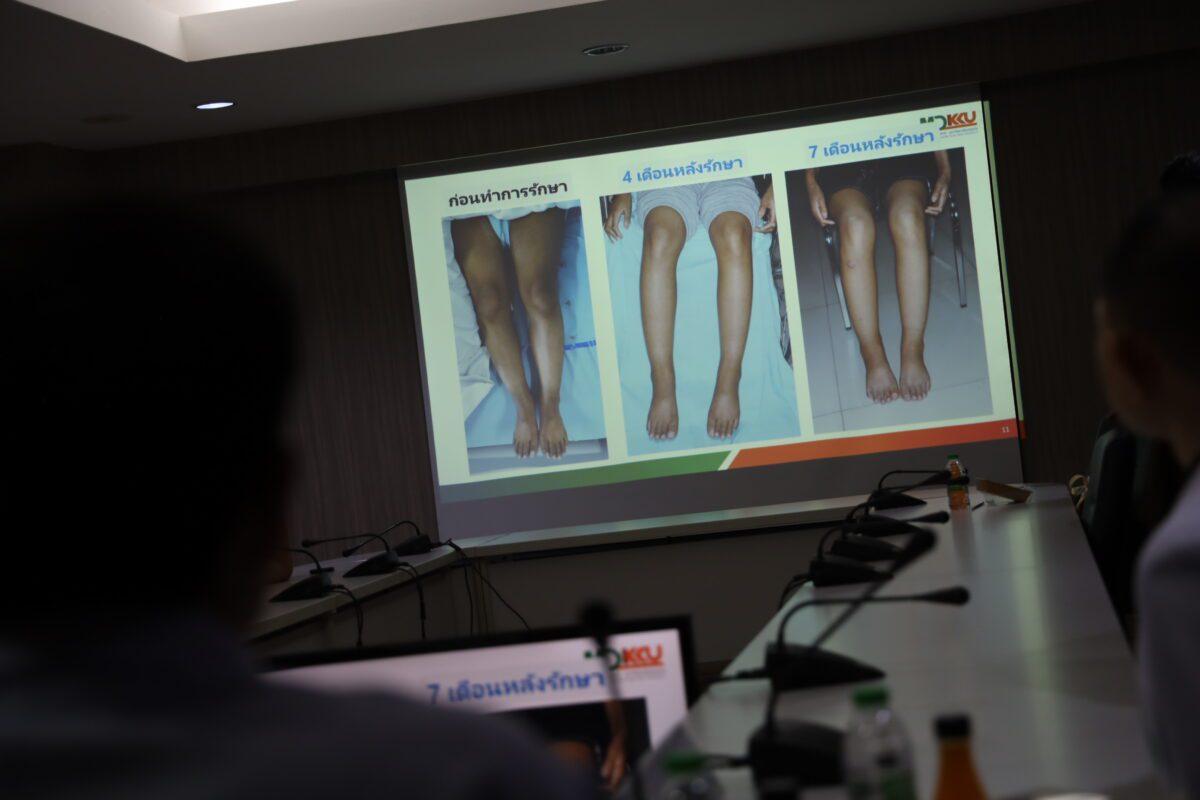
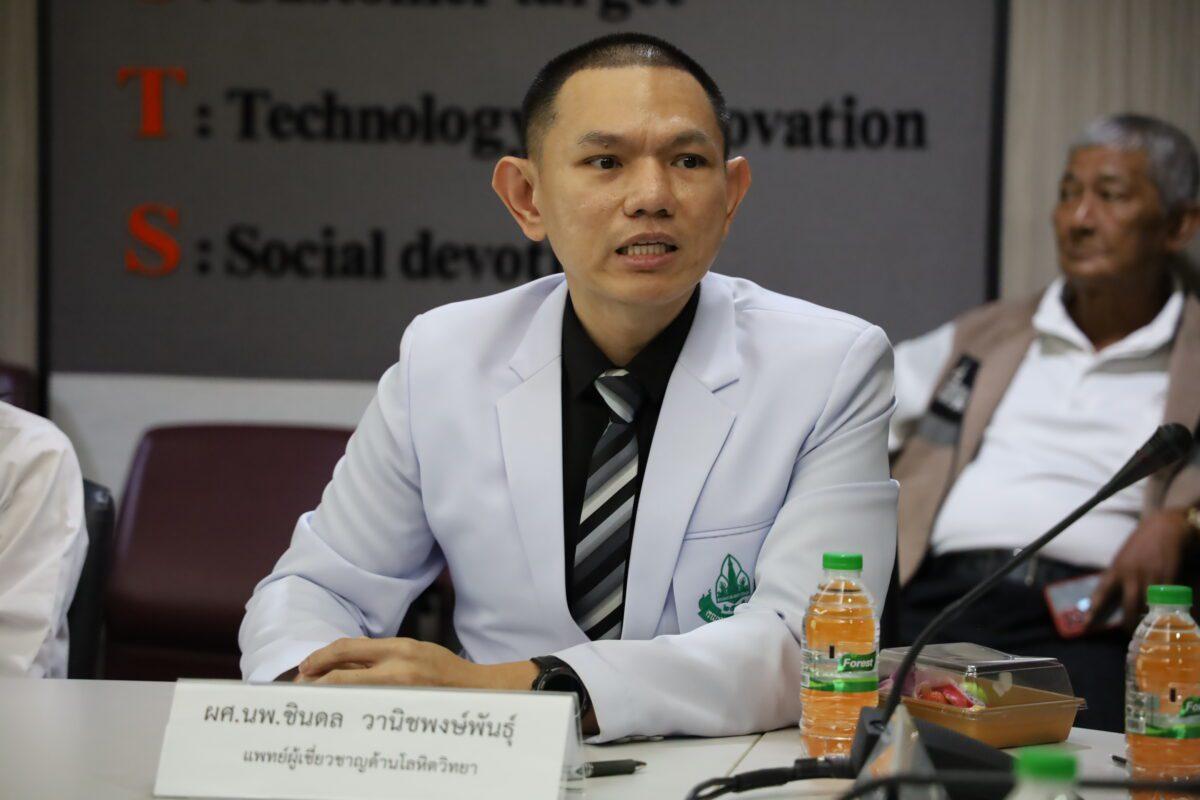
Asst. Prof. Chinnadol Wanitpongpan, M.D., specialized doctor in Hematology, Department of Medicine explained about Hematopoietic Stem Cell Transplantation (HSCT) that it is an innovation that has been used for 50 years, especially in cancer treatment. At present, the transplantation uses the patient’s cell. It is an alternative that is efficient, stops the disease or leads to full recovery, allowing the patient to live his or her normal life. Principally, doctors will stimulate and collect hematopoietic stem cell of the patient, and then prescribe the patient with high dose of chemotherapeutic medicine to do away with the abnormal immunological cell and to reset the immunization. Next, the hematopoietic stem cell will be given back to the patient for physical rehabilitation.
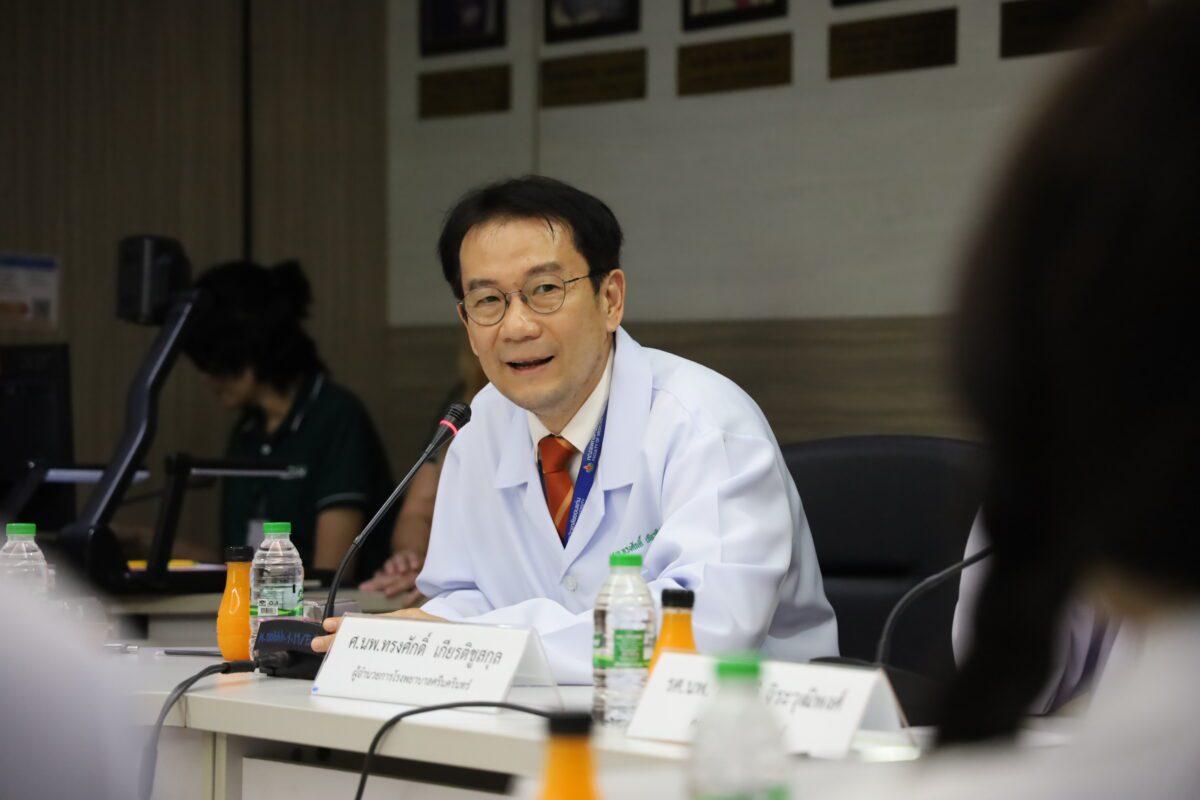
“Normally, hematopoietic stem cell transplantation is performed with patients not too old and whose organs still function well. Patients whose symptoms are severe and expand quickly are selected. For older patients with Scleroderma and whose symptoms are not severe, transplantation is not necessary.”
Miss Tanawan Tophukhiaw, the patient, related about her feeling, saying she was grateful to the hospital and the team of doctors. Before the treatment she found it very difficult to live. In the cold season she felt colder than ever and had wounds develop on the finger sides. She was unable to move at the joints and arms. When she had to have blood test, the technician could not draw blood from her, for the skin was too tense. She was unable to go to class and missed classes often. After the treatment, she became happier for the symptoms were better and she could nearly spend her living like before. She was able to join more activities with friends and there was a team of doctors and nurses to always take care of her.

“Thanks to the hospital and the team of doctors who have given me my new life. I’d like to give my support to the patients of Scleroderma to go on living and fight the disease. There are doctors who are able to help you.”
Prof. Songsak Kiatchusakul, M.D., Director of Srinagarind Hospital, concludes the press conference by thanking donators for the Srinagarind Fund. The donated money is used for helping the patients with complications and low-income whose hospital charges exceed the health insurance rights.
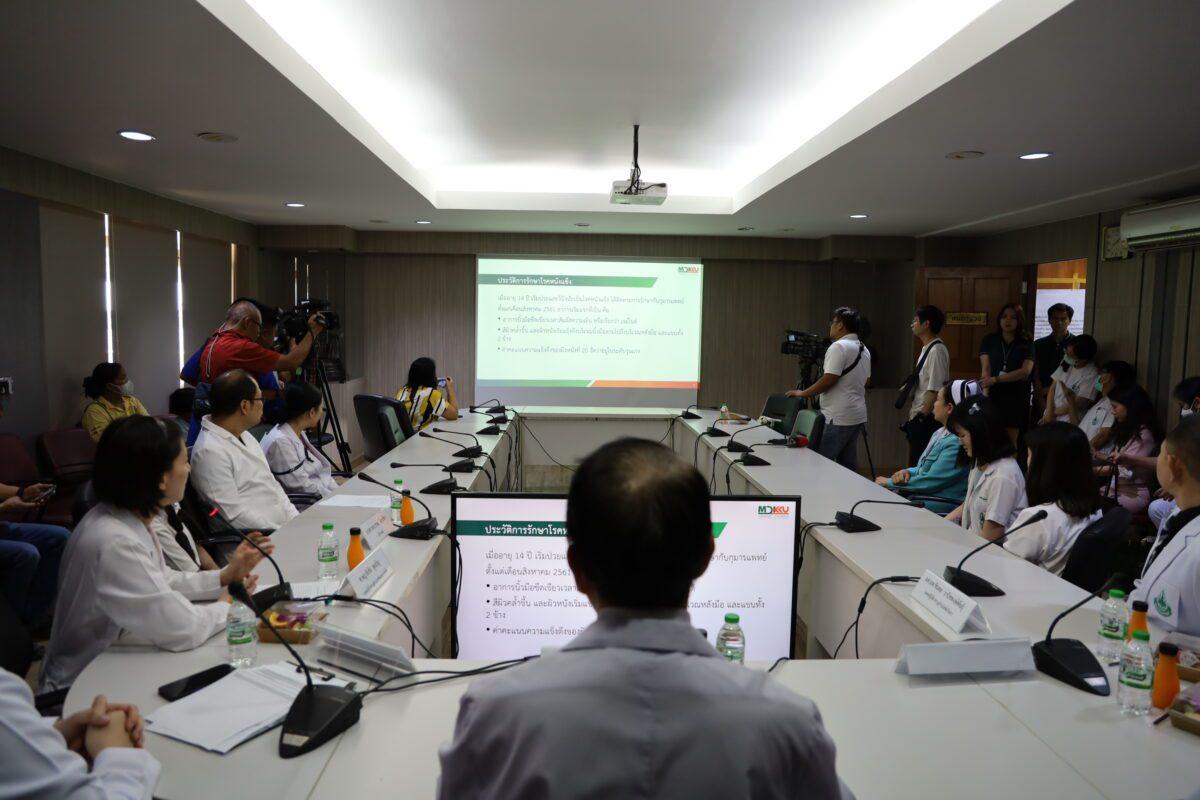
“The development of technology to treat this case of patient is the example where we used the donation money. There is hope for life from the donation, which can be done to Srinagarind Fund at the Faculty of Medicine, Khon Kaen University.”
News / Photos: Phanit Khatnak

